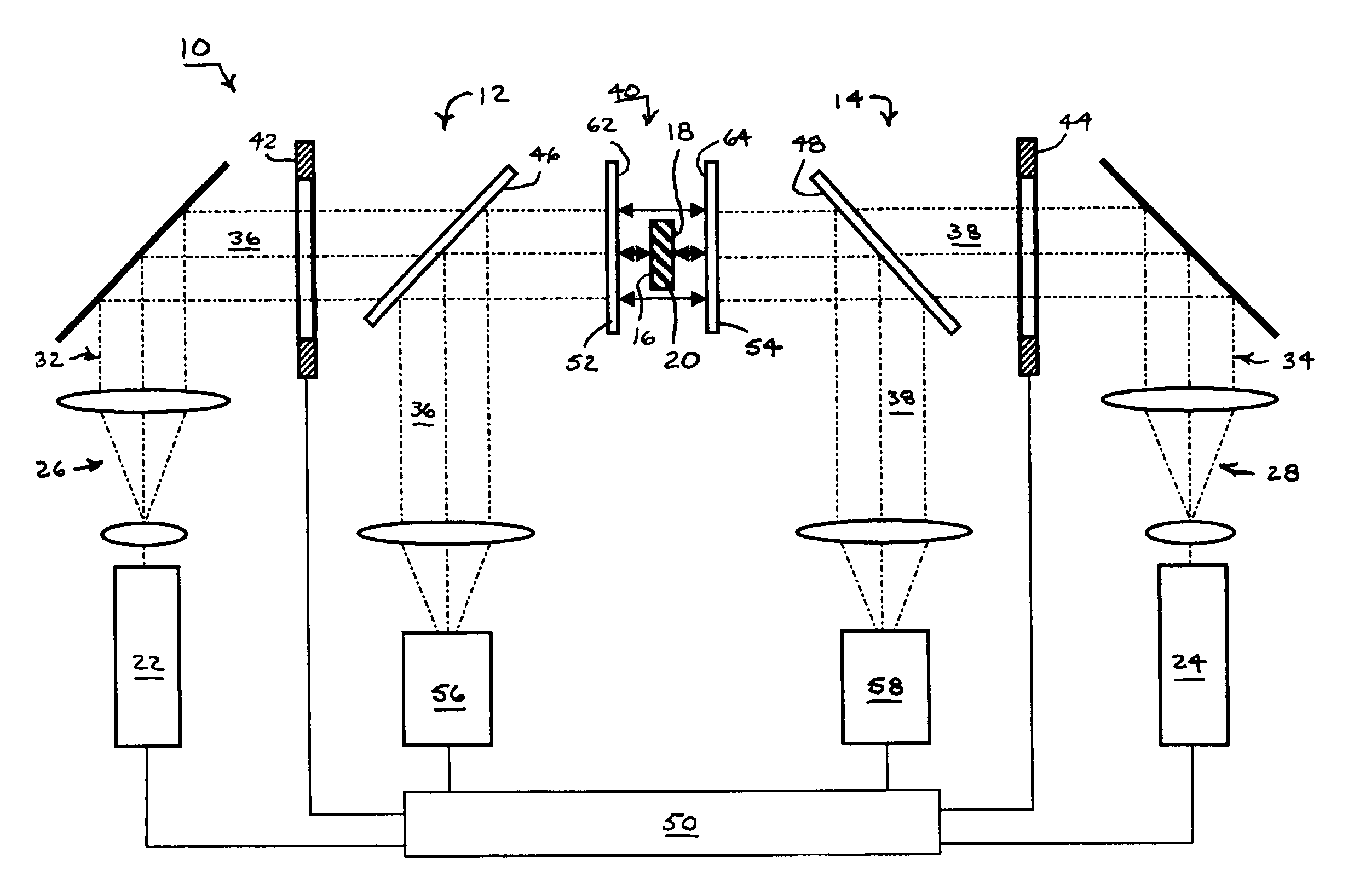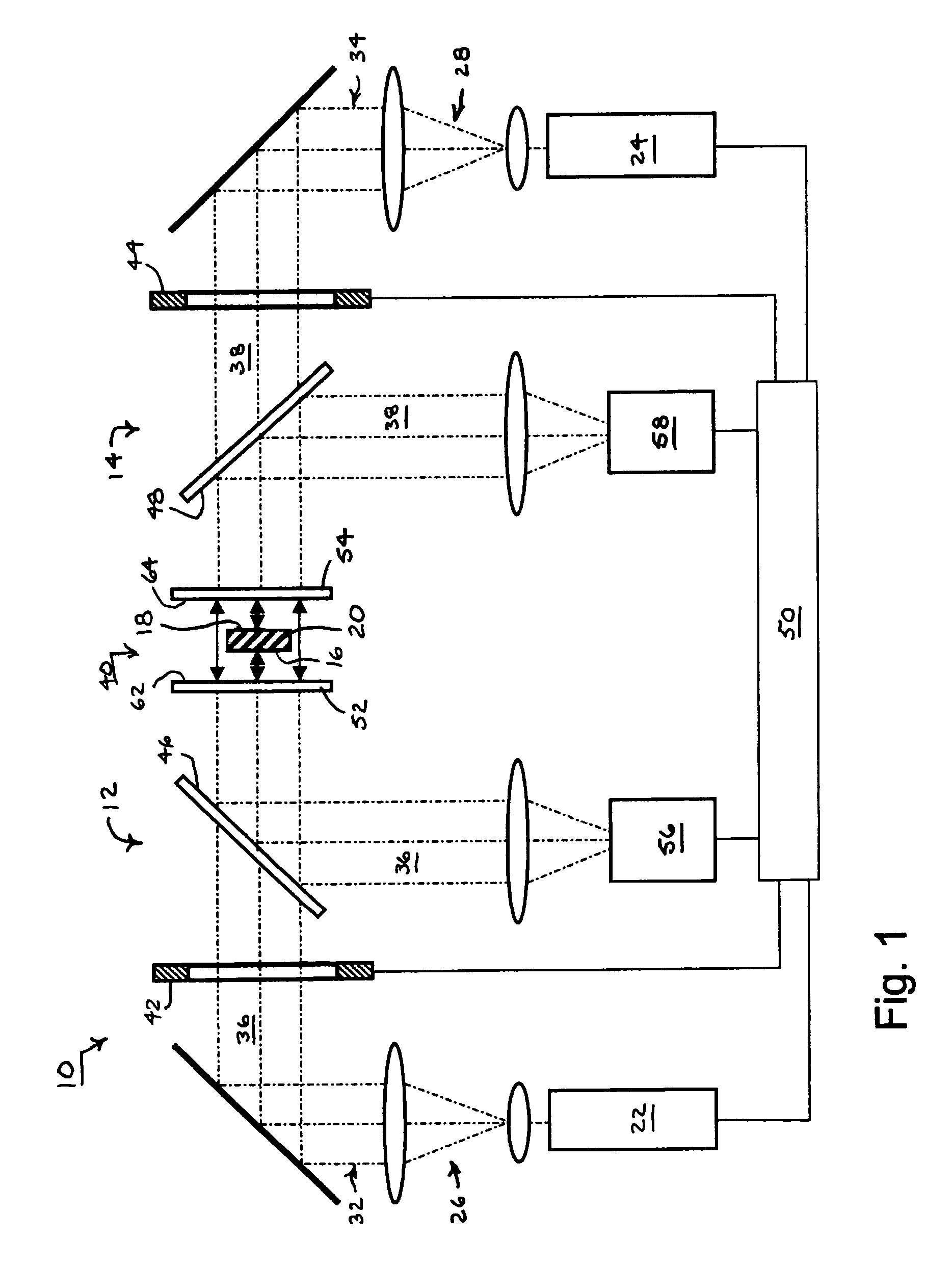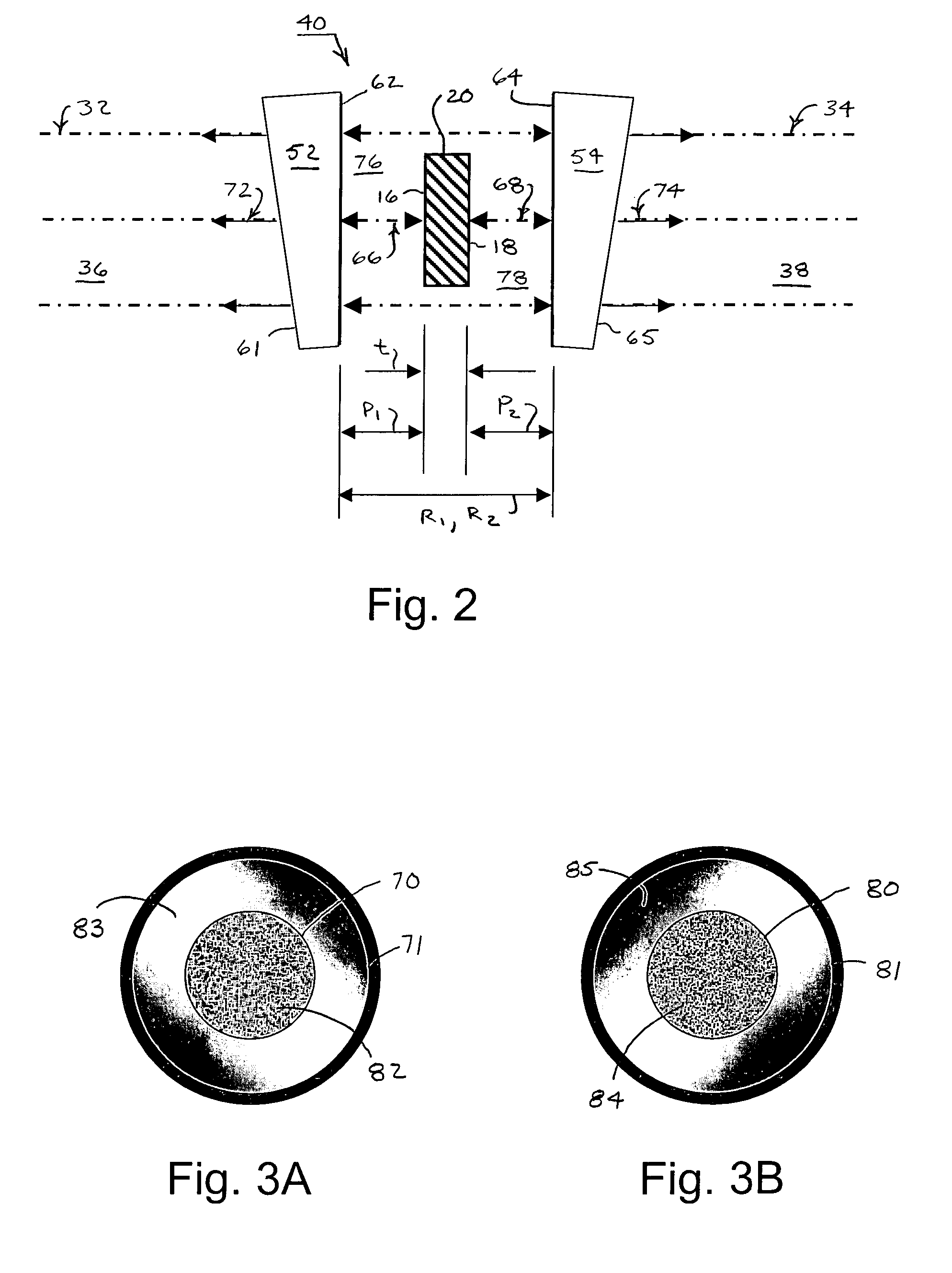Overlapping common-path interferometers for two-sided measurement
a technology of interferometers and common paths, applied in the direction of interferometers, instruments, measurement devices, etc., can solve the problems of affecting the accuracy of interferometers. , to achieve the effect of reducing the cost of interferometers, and reducing the accuracy of interferometers
- Summary
- Abstract
- Description
- Claims
- Application Information
AI Technical Summary
Benefits of technology
Problems solved by technology
Method used
Image
Examples
Embodiment Construction
[0040]An interferometric measuring system 10 combining first and second common-path interferometers 12 and 14 for measuring opposite first and second sides 16 and 18 of an opaque test part 20 appears in FIG. 1. The opaque test part 20 can be a part that is made of materials that are not transmissive within the range of frequencies propagated by the common-path interferometers or that is sufficiently diffuse to preclude the ordered transmission of such frequencies. The first and second interferometers 12 and 14 include respective first and second light sources 22 and 24 and first and second beam shapers 26 and 28. The first and second light sources 22 and 24 are preferably frequency-tunable light sources for producing respective first and second measuring beams 32 or 34 that can be varied through a succession of different wavelengths for carrying out frequency-shifting interferometry. The first and second beam shapers 26 and 28 preferably include beam expanders and collimators for es...
PUM
 Login to View More
Login to View More Abstract
Description
Claims
Application Information
 Login to View More
Login to View More - R&D
- Intellectual Property
- Life Sciences
- Materials
- Tech Scout
- Unparalleled Data Quality
- Higher Quality Content
- 60% Fewer Hallucinations
Browse by: Latest US Patents, China's latest patents, Technical Efficacy Thesaurus, Application Domain, Technology Topic, Popular Technical Reports.
© 2025 PatSnap. All rights reserved.Legal|Privacy policy|Modern Slavery Act Transparency Statement|Sitemap|About US| Contact US: help@patsnap.com



